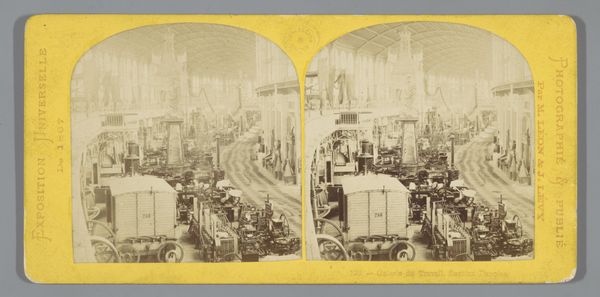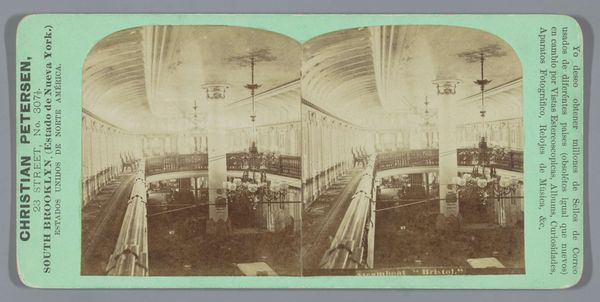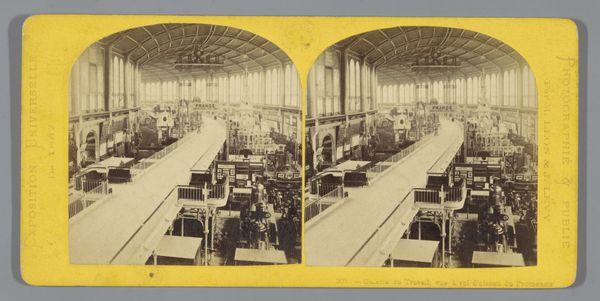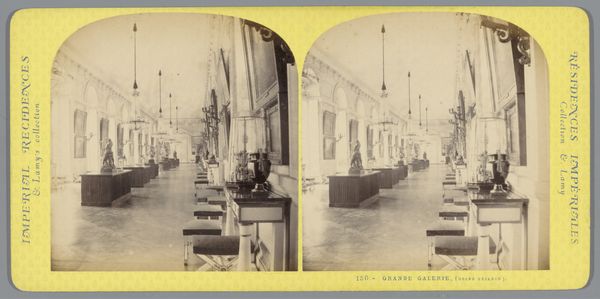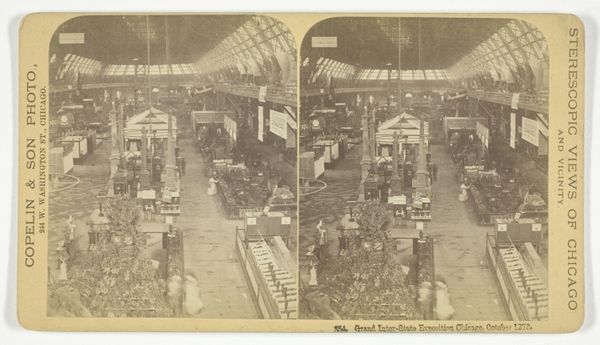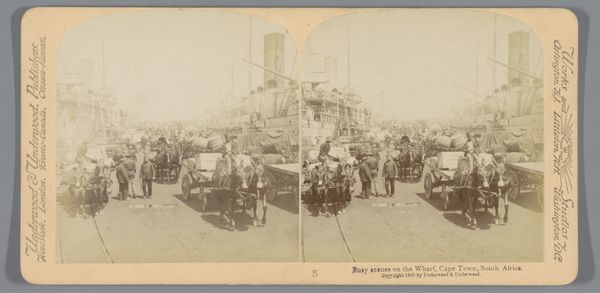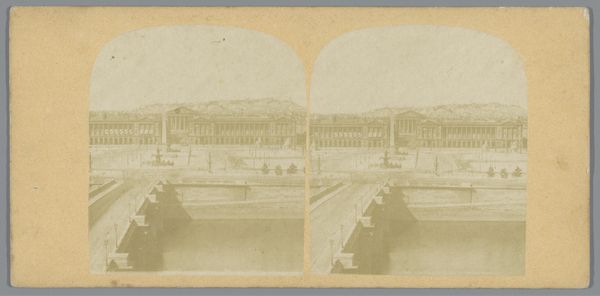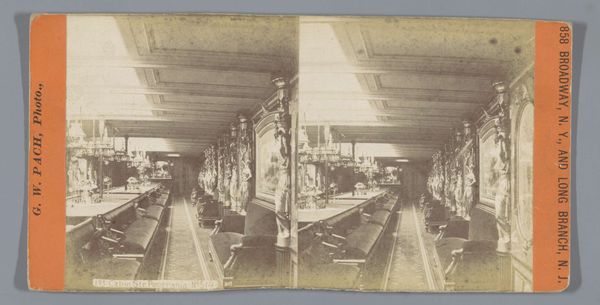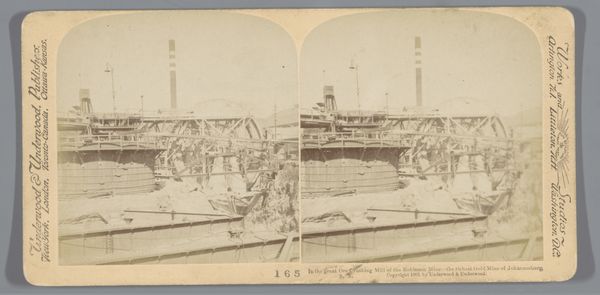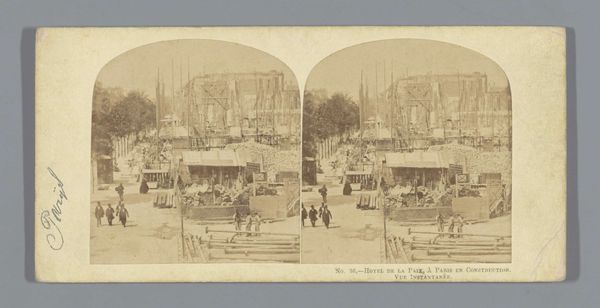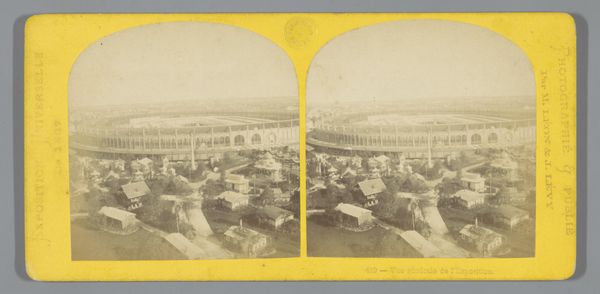
print, photography, albumen-print
# print
#
landscape
#
photography
#
coloured pencil
#
albumen-print
Dimensions: height 83 mm, width 171 mm
Copyright: Rijks Museum: Open Domain
Editor: Here we have "Nederlandse afdeling in de Machinehal op de Wereldtentoonstelling van 1867," an albumen print from 1867, created by Léon & Lévy. It's fascinating how photography captured these huge interior spaces even back then. It feels very orderly and structured. What strikes you about this photograph? Curator: I'm drawn to the symbols within this seemingly straightforward interior. Notice how the Dutch section, although presented as a modern industrial display, is framed almost as a temple. The arched structure, repeated patterns, and clear organization evoke a sense of reverence and national pride through the guise of industrial progress. What feelings are evoked? Does it seem purely functional? Editor: No, now that you mention it, there's a deliberateness that goes beyond mere function. It’s as if the photograph isn't just showing machines, but rather how a nation wants to be perceived, its self-image, wouldn’t you say? Curator: Exactly! This period of exhibitions became very important for that. Consider what the repetition of machines suggests about standardization, order, and even societal control. These spaces weren't neutral; they actively shaped perceptions. And how interesting the cultural values displayed through these… “industrial icons.” Editor: So the photograph itself becomes a historical artifact, showing us how countries visually communicated their ambitions? Curator: Precisely! It highlights the visual rhetoric employed, telling a potent story of progress and identity intertwined with early industrialization, a sort of collective ambition memorialized in an image. We must consider the symbols used when judging a nations success. Editor: I'll never look at historical photographs the same way again. It really broadens how one can perceive art as a means of communication between generations. Curator: And how a photograph is just as carefully posed as any painting might be. There are narratives in the unlikeliest of places.
Comments
No comments
Be the first to comment and join the conversation on the ultimate creative platform.
